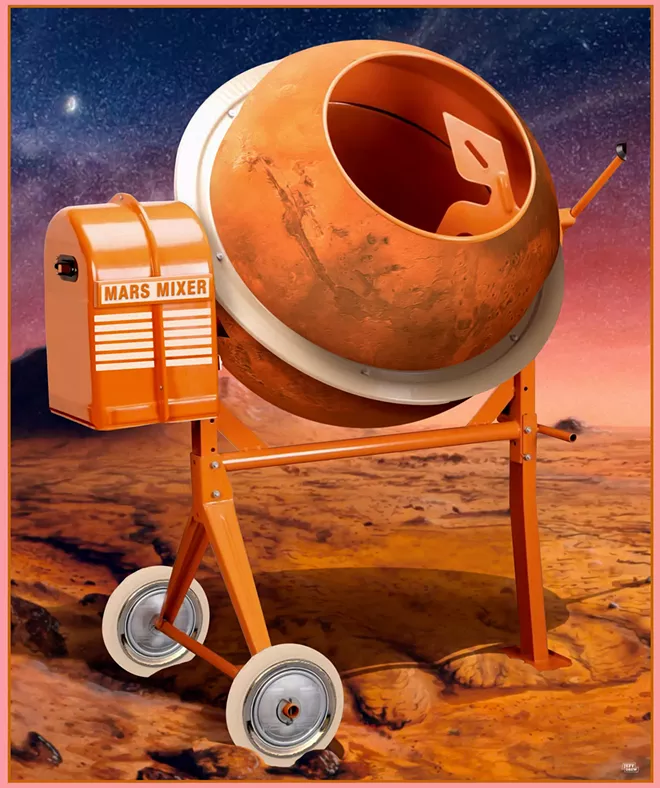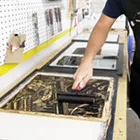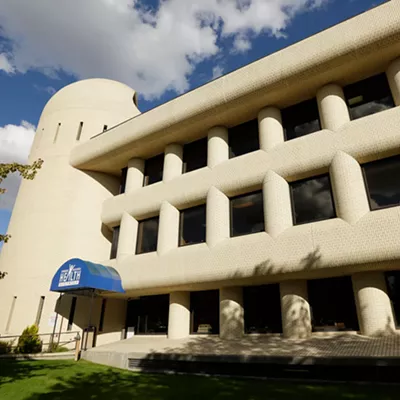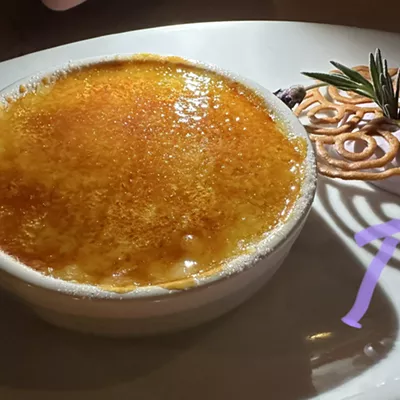Imagine this: You're an astronaut fresh off the 300 million-mile trip to Mars, eager to start your research and maintain your enclosed living space. And then something breaks.
While you probably loaded your ship with some backups, your packing list had to be light because it can cost more than $24,500 per pound to bring something via space shuttle. So what happens when you don't have an extra and the closest store is seven months away on Earth?
You innovate, starting with what you have in front of you, which hopefully includes a fancy 3D printer that can melt metal and rock with a laser or some other heat source.
You scoop up some of the dust from the Martian surface, mix it with the titanium you have on hand (it's commonly used in spacecrafts), and print out some nuts and bolts, or the specific tool you need.
Thanks to Washington State University's Amit Bandyopadhyay and his team, we now know this can work.
"If you talk to any space agency, this is something on everybody's mind," Bandyopadhyay says. "The question is, 'What are the best ways and the best materials we can use so we have backups?'"
Not only did Bandyopadhyay's team prove that 3D-printed composites are possible, they showed that using just a little bit (around 5 percent) of makeshift Martian dust mixed with titanium resulted in an even stronger material than just using metal alone.
The team used rock from the Mojave desert to mimic Martian dust, as it appears to be made from similar elements.
Technically, they also showed you could print something using 100 percent Martian rock dust, but in practice, those pieces aren't very strong unless you're using the material for something simple like a landing pad, Bandyopadhyay says. The mix of metal and dust was much stronger.
"We've tried to show this composite material can be manufactured and show better results in terms of the mechanical performance," he says.
The dust-metal mixture can be used for other applications, too.
"We can make a metal and coat it with Martian dust, and that can provide radiation protection," he says. "Those are coatings like painting your car so it doesn't corrode."
The WSU team's research was published in July 2022 in the International Journal of Applied Ceramic Technology.
Bandyopadhyay, a professor in the School of Mechanical and Materials Engineering, is no stranger to three-dimensional printing. He and his wife, researcher Susmita Bose, have been working with it since the mid-1990s, when few people had ever even heard of the concept.
Early on, he worked with ceramics, melting rock material to be printed instead of doing something like shaping a brick and firing it in a kiln.
The team also showed that medical devices like hip replacements can be printed.
"It's a journey," he says. "When we started with medical devices, nobody believed in it. In my lifetime, I'm seeing patients doing wonderfully well with 3D-printed parts."
Space is the next exciting frontier for 3D printing. The idea of melting ceramics through a metal printing machine kicked off a project with NASA in 2010 to use makeshift moon dust to 3D-print some items. Bandyopadhyay's team proved it worked, but there were still weaknesses.
"Think of your coffee mug — that's a ceramic part — and think if by mistake you drop it, it shatters, it cracks," Bandyopadhyay says. "When we talk about moon dust and Mars dust, they are ceramic. Even if we can make a shape out of it, there are few things we can do if it's 100 percent out of those materials, if you're talking about the tools you need to make."
The key, they've found, is to make a hybrid of material from the lunar or Martian surface mixed with something people can bring with them from Earth, he says.
The printing research their team has done is just the beginning.
Perhaps someone will show that another metal works even better, or that more rock can be used in the composite, Bandyopadhyay says. Or maybe someone will prove that you can use the printer to patch or repair something, instead of printing a whole new part.
"If we want to think of a Mars mission, even if it's 25 years out, we can't send everything from here," Bandyopadhyay says. "We have to think of some technological advancement we can use." ♦





























